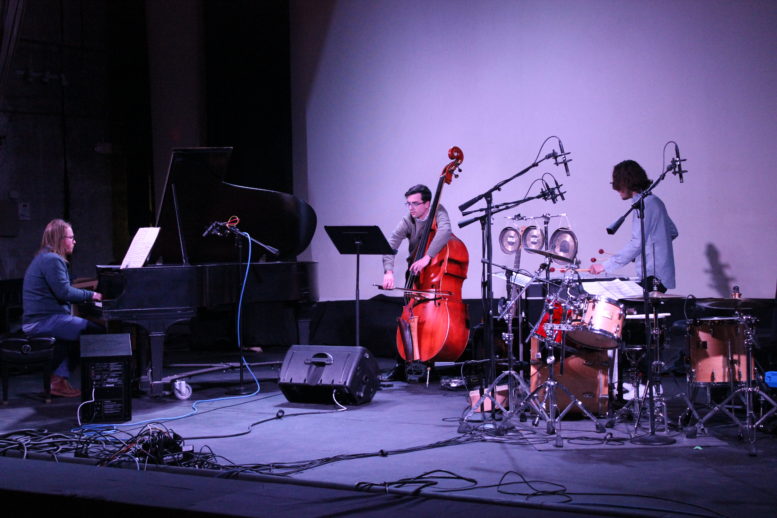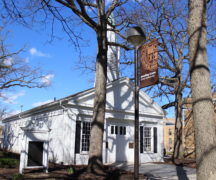By DAVID DUPONT
BG Independent News
The ClaZel hosted a Music at the Forefront concert Monday night. It might as well have been a rock show.
The new music trio Bearthoven vaulted the divide between avant art music and progressive rock. Ditch the expanse of scores on the music stands and the Brooklyn-based trio could perform at a rock festival.
Bearthoven – Karl Larson, piano, Pat Swoboda, bass, and Matt Evans, percussion – arrived in Bowling Green (where Larson earned his doctorate) at the tail end of a short Ohio tour. The tour, which included a concert in Columbus, a house concert in Cleveland, and residency at Otterbein College, was to showcase the most recent additions to the trio’s repertoire, three works commissioned by the Johnstone Fund for New Music.
Those filled out half the six-piece program. Each set was organized like the side of an LP with a soft, atmospheric soundscape, sandwiched between louder, more rhythmically insistent blasts.
Bearthoven’s show opened with Ken Thomson’s aptly titled “Grizzly.” With its antic pulse and reiterated song-of-the-circuitry figures, it evoked a more urban predator. Fjola Evans’ “Shoaling” took listeners to another place altogether. Swoboda’s arco bass summoned the image of a whale rising from an icy sea. The piece opens extremely quietly, builds in tension, and complexity, and volume, then rolls back to near silence. It moves at a near geologic pace. In the end it fades into the silence of the venue’s ventilation and a car whooshing past outside.
As if to answer the car’s roar, Charles Wilmoth’s “Silver Eye” opens with a bash, a complaint, even? Evans pounded the driving hard rock rhythms underneath while Larson splattered clusters and runs on top. How many new music compositions include a nod to “Wipeout”? “Silver Eye,” though, was more metal than surf rock.
Opening the second half, Brooks Fredrickson’s “Undertoad” marched to a different rock beat. Evans laid down an akimbo shuffle beat under the unfolding minimalist figures. The piece was the first Bearthoven commissioned and it shows how this blur of rock, jazz, and new music is woven into the band’s DNA.
Adrian Knight’s “The Ringing World” is one of the Johnstone commissions. (The Wilmoth and Evans pieces are the others.) The whistling arco bass against shimmering vibes and piano textures (not unlike the way Miles Davis used layers of electric keyboards and guitar on “In a Silent Way”) created a high gloss atmosphere, a world of its own into which the outside world intrudes – like a child wide awake in bed late at night in a hospital: The silence a concept more than a reality.
Bearthoven closed with Nik Bartsch’s “Module 26,” a minimalist jazz venture that shimmers in its own way. The rhythms are layered one on another, and the piece employs sudden shifts from one melodic mode to another. As this becomes evident, the listener starts to anticipate the shifts, as one would with modal jazz. That anticipation is always frustrated, though, coming as it does, a few beats and a fraction later than expected. Then the expected modulation doesn’t arrive. The percussion, including the dramatic appearance of a woodblock, and repeated figures nailed down by the bass, carry the piece, and the show, to its close.
Heady stuff, indeed, that is just accessible enough, without compromise, to pull in listeners from further, musical fields.





